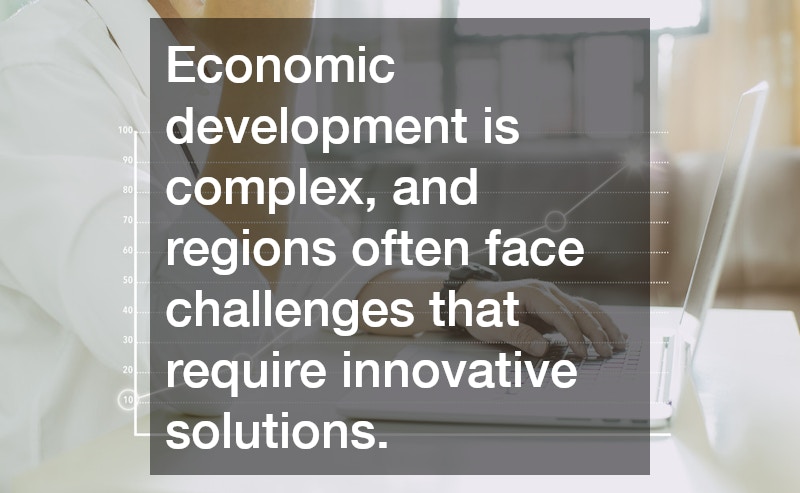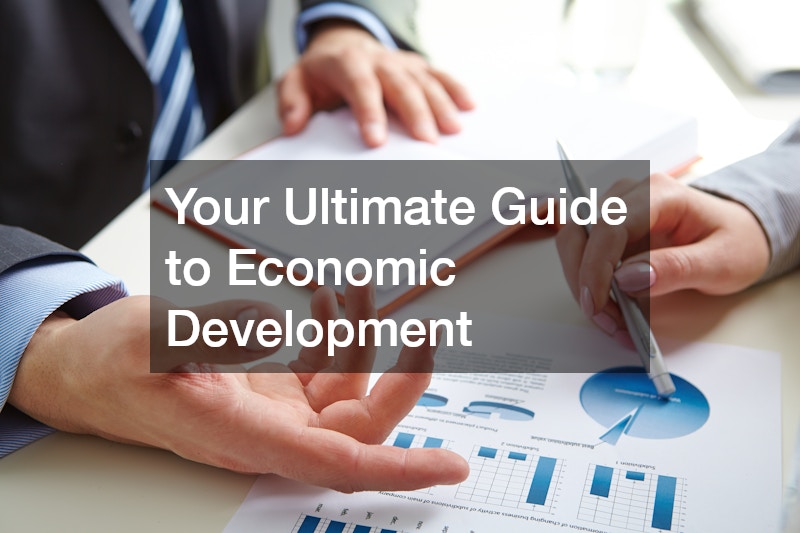
Economic development is a critical process that involves improving the economic health, quality of life, and prosperity of communities, regions, or countries. It encompasses various initiatives, from infrastructure development to job creation, aimed at stimulating growth and reducing poverty. Understanding economic development and how it works is essential for policymakers, businesses, and community leaders alike, as it directly impacts local economies and the quality of life for residents.
Here’s a comprehensive guide to the key elements and strategies in economic development.
1. What is Economic Development?
Economic development is the process of creating economic growth and improving the living standards of a region’s population. It includes a mix of policies and programs that promote income generation, employment opportunities, improved infrastructure, and enhanced social welfare. Unlike economic growth, which primarily focuses on increasing a region’s output of goods and services, economic development is more holistic and considers factors like equity, sustainability, and quality of life. This distinction is essential, as economic development initiatives are often designed to address long-term community goals rather than short-term financial gains.
2. Key Goals of Economic Development
The primary objectives of economic development vary by region but generally include:
- Job Creation: Creating stable, high-quality jobs is a foundational goal. Employment opportunities boost local incomes, reduce poverty, and increase overall economic stability.
- Business Growth: Encouraging business creation and expansion strengthens the local economy, as new businesses provide more jobs and contribute to a diversified economy.
- Infrastructure Improvements: Economic development often requires investments in infrastructure, including transportation, utilities, and digital connectivity, to support growth and attract businesses.
- Enhanced Quality of Life: Beyond economic benefits, development initiatives focus on improving healthcare, education, housing, and recreational facilities to create a balanced community.
- Sustainability: Sustainable development practices ensure that economic growth does not compromise natural resources, promoting long-term ecological balance.
3. Strategies for Economic Development
Successful economic development initiatives typically rely on a mix of strategies tailored to a region’s unique resources and needs. Here are some common approaches:
- Workforce Development: Programs that enhance skills and training help build a skilled workforce, making the region attractive to high-quality businesses and improving job prospects for residents. This may include partnerships with educational institutions, vocational training, and apprenticeships.
- Attracting Investment: Incentives like tax breaks, grants, and subsidies can attract both local and foreign investments. By creating a favorable business environment, regions can draw companies that bring jobs and generate revenue.
- Innovation and Technology: Supporting technological innovation fosters new industries and drives productivity. Economic development often includes promoting research and development (R&D) initiatives, tech incubators, and business accelerators.
- Infrastructure Development: Expanding transportation networks, utilities, and broadband access are essential to accommodate growth and improve accessibility. This strategy is crucial in connecting rural areas with urban centers, allowing businesses to expand.
- Public-Private Partnerships (PPPs): Collaborating with the private sector allows communities to leverage resources and expertise for large projects, like affordable housing or renewable energy, benefiting both the economy and residents.
4. The Role of Government in Economic Development
Governments at local, state, and federal levels play an essential role in driving economic development through policies and funding. Local governments are often directly involved in infrastructure projects, business support programs, and workforce development initiatives. State governments typically provide financial resources, incentives, and regulatory frameworks to facilitate development. National governments, on the other hand, set the broad economic policy direction, secure foreign investments, and support large-scale initiatives. A collaborative approach involving all levels of government creates a supportive environment for sustained development.
5. Challenges in Economic Development
Economic development is complex, and regions often face challenges that require innovative solutions. These can include economic inequality, which may limit benefits to certain groups, environmental sustainability concerns, and the need for continuous innovation in a rapidly changing global economy. Furthermore, economic development programs require substantial funding, and securing these resources is often a primary challenge for policymakers. Addressing these issues through inclusive and sustainable practices is key to successful economic development.
Economic development is a multifaceted process that transforms communities by fostering economic growth, creating job opportunities, and enhancing quality of life. By implementing well-planned strategies such as workforce development, investment attraction, and infrastructure improvement, regions can unlock their potential and create sustainable, prosperous communities. Whether you’re a policymaker, business leader, or community advocate, understanding the principles of economic development empowers you to contribute effectively to the growth and well-being of your region.
.




